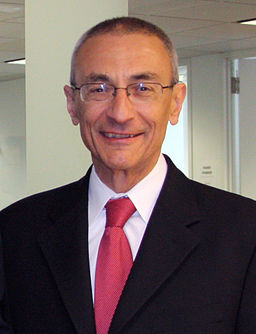Turnout, Turnout, Turnout
Like the mantra “location, location, location” in real estate, there may be an operative phrase in political elections, and it is “turnout, turnout, turnout”. One year away from the 2020 presidential election, centrist, party-line Democrats are most concerned with “electability”, and before the primary season has begun they have anointed Joe Biden as the most “electable” candidate. Their overriding concern for electability is understandable considering the crucial importance of the 2020 presidential election. What they don’t seem to account for is how their idea of an electable candidate may depress turnout, an outcome that tends to favor Republican candidates.
Democratic voters outnumber Republican voters, and therefore high turnout elections tend to favor Democratic candidates. The reason low turnout elections favor Republicans is because the percentage of eligible Republican voters who turn up at the polls does not vary as much as the percentage of eligible Democratic voters who actually vote. One can get deeply into the weeds on the demographics behind this behavior, but it is sufficient to note here that it is a long standing trend and will likely continue on Election Day in 2020.

A line of people turned out to vote in Brooklyn, New York, in the November 2008 election. Photo by Flickr user April Sikorski.
In the 2016 election, the Democratic Party establishment crammed down the throats of Democratic voters a candidate who did not generate widespread enthusiasm. The Democratic Party since the days of Franklin Roosevelt has included a more diverse coalition of voters than the Republican Party, and Democrats as a result are less interested in toeing the Party line for the sake of an election than are Republicans. Some Democrats who were lukewarm on Hillary Clinton either defected to third party candidates or did not vote at all. That she nonetheless won the popular vote by nearly 3 million votes was not a statement for her popularity as much as it was a statement about the unpopularity of her Republican opponent.

Voting machine lever, pictured in January 2008. Photo by Pauljoffe. The last of the old lever voting machines were used in the midterm elections in New York state in 2010.
The erroneous polls leading up to Election Day in 2016 also were a factor in Ms. Clinton’s loss in the real decider of presidential elections, the Electoral College. Polls predicting not only a Clinton victory, but a possible landslide, were perhaps a factor in depressing Democratic turnout around the country enough that it made a difference in the outcomes in Wisconsin, Michigan, and Pennsylvania, swing states that the Republican candidate won by a total of less than 100,000 votes, tipping the Electoral College in his favor. The demographics of Democratic voters are such that they are more likely than Republican voters to skip voting for a variety of reasons, among them being the appearance from polls that their candidate already has the election in the bag.
Overconfidence will likely not be a stumbling block this time around since everyone who has been paying attention even a little bit to developments in this country since January 20, 2017, should be well aware by now of the high stakes involved in the next presidential election. It is not hyperbole to state there has not been as crucial an election for the continuance of our democracy since the election of 1860. The corporate, centrist minority of the Democratic Party is determined to trot out yet another corporate, centrist Democratic candidate in the 2020 election, whether that be Joe Biden or, in case he falters in the primaries, Pete Buttigieg. The Democratic Party establishment keeps hammering away on “electability”, even more now than in 2016 because the mental case currently despoiling the country from the Oval Office is a known quantity after three years and for the sake of the country must not be allowed to continue in power past January 20, 2021.
“Do It Again” by Steely Dan, from their 1972 album Can’t Buy a Thrill.
The Democratic Party establishment refuses to see a move to the left as an opportunity in the coming election. Why would they, since that is not where the corporate masters want them to go? Voter demographics, however, are leaving behind the Democratic Party establishment as currently constituted, as well as leaving behind the Republican Party more generally. Whether that will have an enough of an effect at the polls on Election Day 2020 to make a difference depends on turnout, and that depends on enthusiasm for a Democratic candidate as much as it does disgust about what the presumptive Republican candidate has done to the country and will continue to do if re-elected. Demographic changes won’t make a bit of difference in moving the nation to the left or in booting out of the Oval Office the cancerous tumor currently infesting it if the people representing those changes don’t show up at the polls and vote.
— Ed. 













